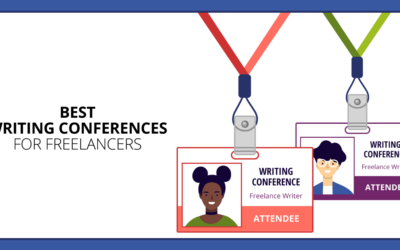
Now, those of you who are longtime readers of my blog know that I am not a naturally tech-inclined person. Tech malfunctions make me cry. I pay a Webmaster to create my Web sites.
So believe me when I say that all of these tech tools are easy to use. I didn’t spend more than 10 minutes or so learning to use any one of them.
In this Internet age, having some technical ability is a great way to set yourself apart as a writer. It’s a value-add — something you can offer clients that saves them money on the back end, so it supports your earning a higher rate.
Here’s a look at the tech tools I think writers should be getting to know if they want to position themselves for higher earnings. Right now, I’m finding companies are fairly open to training people up a little on these, if you have at least a rudimentary knowledge of the tools already. A year or two from now, I think knowledge of these tools may well be required to get many better-paying online writing gigs.
1. Basic HTML coding. If you don’t know how to code a link (that’s <a href=https://www.yourwebsite.com> words you want to enliven </a> except without the spaces), well, that’s how you do it right there. Know how to code to bold, underline and italicize words. That’s about all I’ve needed to know, but you can learn more about html at the handy free site W3Schools. In many platforms you don’t need to know HTML anymore, but it’s useful for adding links in blog comments, so great for those who are pitching writing packaged with social media marketing.
2. A blog program. I was thrown into this arena on Movable Type, which is pretty clunky, but have since learned Blogger, WordPress and most recently Joomla. Blogging programs are very easy and intuitive to use, and all the popular programs are quite similar to each other, so learn one, and you pretty much get the drift. I acquired this skill just in time to use it on my major gig blogging for BNET (part of CBS!). I’m not sure I could have gotten the tryout there if I hadn’t been able to say, “Yeah, I’ve used WordPress before.” I’d used it for about two weeks, and still didn’t know a lot of the features…but they didn’t need to know that. Blogging basics you need include how to enliven links, schedule posts, and add photos.
3. How to add free photos to blogs. In June, I signed a big ghost-blogging and Web content client who hired me an hour after I sent my resume, and deposited a $300 up-front payment directly into my bank account before the end of the day. Why? I was able to solve a big problem he had — this marketing-agency owner was way behind in blogs for his clients. When I told him I could write posts directly on his clients’ Joomla blogs and have them ready to post, complete with photos, he was sold. He’s paying me $100 a blog, a rate he let me know he had not paid previously. The technical skill made the difference and supported my rate. I know I should know how to add videos too, but so far that has kind of eluded me…still working on it.
There are several sites where you can get free photos to use — I like Flickr Creative Commons, which I’ve used for this post you’re reading right now. It’s easy to add them to a post two ways: either right-click on “Save image to the desktop” or “Copy image address.” Then click whatever the ‘add media’ icon is in the blog program and fill out the little menu to select and download the .jpg file off your desktop, or put the image URL directly into the address line. Ta-da! An illustration to enliven your post.
4. Virtual team software. Right now, I get my BNET blog ideas approved in a virtual newsroom on Campfire, where we all crack wise, support each others’ efforts, and stay off email for all our BNET doings. I also work in a virtual team for that ghost-blogging client above on Basecamp, posting and updating files and getting information about my projects. These virtual-team platforms are so easy it doesn’t take five minutes to learn how to use them. They’re only a half-step above the Yahoo! Groups or BigTent forums you may be using in your personal life. If a prospect asks if you know about them, just nod your head.
What tech tools are you using to earn more with your writing? Have I left any good ones out? Leave a comment and let me know.









